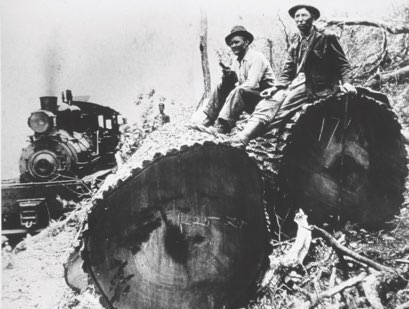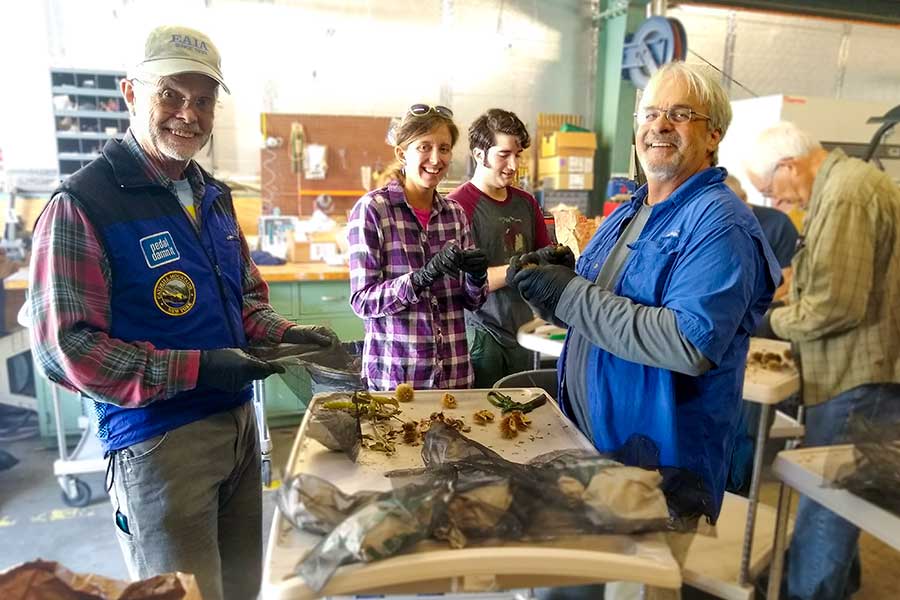About
The American Chestnut Foundation
Our mission is to restore the American chestnut to its native range.
Our vision is a robust eastern forest returned to its splendor.

What We Do

Research
Our species-saving strategy is a powerful combination of traditional breeding and biotechnology. The primary goal of our scientific research is to develop American chestnut trees with sufficient resistance to two deadly diseases: chestnut blight and Phytophthora root rot.

Restoration
The goal of our forest restoration work is to implement plantings of genetically diverse and disease-resistant American chestnut trees that are capable of sustained population growth across the native range in the ever-changing landscape of our Eastern hardwood forests.

Education
The American Chestnut Foundation is committed to raising awareness about the plight of the American chestnut and to fostering a new generation of conservation leaders through youth education, public talks, outreach activities, and demonstration plantings.
Who We Are
Our Values
Optimism
Patience
Science-based decisions
Innovation
Integrity
Collaboration

Adopted by TACF’s Board of Directors, these core values are organizational guidelines to ensure the mission to restore the American chestnut to the Eastern forests is a success. Because this mission involves a long journey and is the most complex rescue effort of any plant species ever undertaken, the organization will persevere with patience and optimism.
To accomplish its goals, TACF will make science-based decisions with the integrity necessary to evaluate its work and represent it to the public with transparency. Because of these ambitious goals and ever changing science, TACF must continually innovate and collaborate with its key stakeholders and overall constituency to remain open to new technologies and ideas.
Support the Mission

The American Chestnut Foundation depends on the support of thousands of members and donors to carry out its mission to restore the American chestnut. Thanks to your continued trust and support, TACF is proud to be rated a four star charity by Charity Navigator. Together, we can rescue this iconic and beloved tree species, ensuring healthier forests for a better tomorrow.
History of The American Chestnut Foundation
The return of the American chestnut to its former native range in the Appalachian hardwood forest ecosystem is a major restoration project that requires a multi-faceted effort involving members and volunteers, scientific research, sustained funding, and most importantly, a sense of the past and a hope for the future.
 The history of The American Chestnut Foundation (TACF) chronicles the ongoing pursuit of a fundamental goal: to develop a blight-resistant American chestnut tree via scientific research and breeding, and to restore the tree to its native forests along the eastern United States.
The history of The American Chestnut Foundation (TACF) chronicles the ongoing pursuit of a fundamental goal: to develop a blight-resistant American chestnut tree via scientific research and breeding, and to restore the tree to its native forests along the eastern United States.
TACF was founded in 1983 by prominent plant scientists and laypersons who recognized the severe impact of the American chestnut tree’s demise on the local economy of rural communities and the ecology of forests within the tree’s native range. The American chestnut tree range covered an estimated 180 million acres of eastern woodlands from Maine to Alabama, and from the Piedmont west to the Ohio Valley, until succumbing to a lethal 1-2 punch of disease infections from Phytophthora root rot (Phytophthora cinnamomi) and the chestnut blight (Cryphonectria parasitica) fungus during the the 19th and 20th centuries respectively. An estimated four billion American chestnuts grew within this range, sometimes in dense stands making up 25% – 50% of the trees in those locations.
In 1989 TACF established the Wagner Research Farm, a breeding station in Meadowview, Virginia, to execute the backcross breeding method developed by Philip Rutter, Dr. David French, and the late Dr. Charles Burnham, three of TACF’s founding scientists. These three wrote the first important paper about the breeding program (see Breeding Blight Resistant Chestnuts). The goal was to breed blight resistance from the Chinese chestnut tree into the American chestnut tree, while maintaining the American chestnut’s characteristics.
TACF’s breeding program began by crossing Chinese chestnut trees, which are naturally resistant to the blight, with their American cousins. The result was trees that were 50% American, 50% Chinese. These trees were then backcrossed to the American species, resulting in trees which were 75% American. The procedure was repeated to produce an American chestnut tree that retains no Chinese characteristics other than blight resistance. Mary Belle Price donated a second research farm to the Foundation in 1995, in memory of her late husband, Glenn C. Price, a strong supporter of TACF. A third Meadowview farm was purchased in 2002, and a fourth in 2006. Today, these are collectively known as Meadowview Research Farms and remain the backbone of TACF’s backcross research efforts.
Alongside traditional breeding efforts, TACF has funded and participated in research to control the blight fungus. Partners at WVU, the University of Maryland, and others have worked to identify and deploy methods outside of host-originated resistance that will stop pathogens from killing American chestnuts. Since 2012, TACF has also funded and actively engaged in modern biotech efforts to increase disease resistance in American chestnuts. These efforts include transgenics, cisgenics, gene editing, and other modern technologies. Read more about our integrated research efforts on the Science Strategies page.
TACF is a non-profit organization that serves as a hub for scientific research, implementation, and optimization of silvicultural and forestry techniques, as well as education and outreach about forest health restoration across the United States. TACF seeks to create a template that can then be applied to the restoration of other native forest tree species.
Diversity, Equity, Inclusion, Justice, and Accessibility
TACF is an Equal Opportunity Employer and is committed to providing an equal opportunity to all qualified individuals who are seeking employment, and to all current employees. A Diversity, Equity, Inclusion, Justice, and Accessibility (DEIJA) ethic is a priority and is continually integrated into TACF’s corporate culture which is dedicated to supporting a diverse, inclusive workplace. TACF does not discriminate based on race, religion, color, sex, age, national origin, marital status, sexual or gender preference, veteran status, disability, pregnancy or related condition, ancestry, medical condition, physical handicap, or any other protected class or status.
TACF is a certified living wage employer dedicated to a just and sustainable economy.






